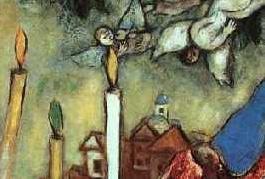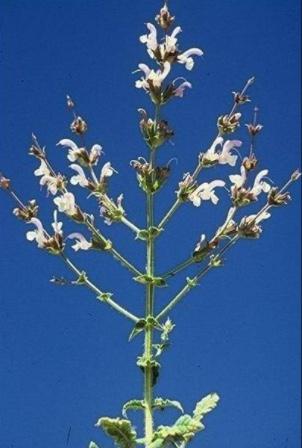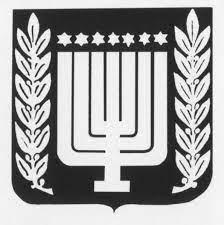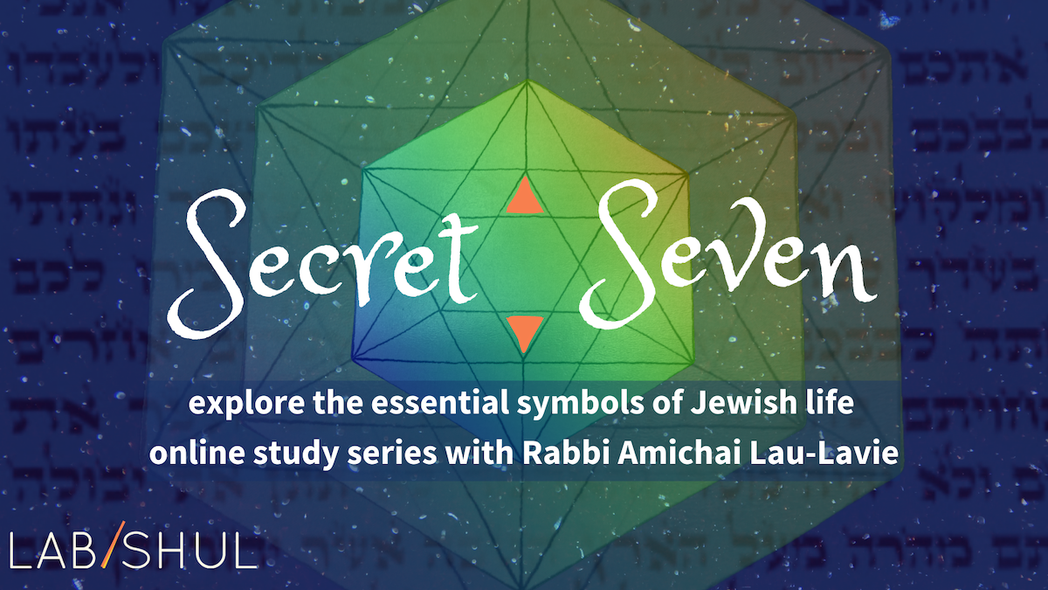Bella Chagall , Burning Lights

(27) The soul of the human is the candle of the Divine, searching all one’s inner parts.
Sefat Emet (Rabbi Yehudah Leib Alter of Ger 1847-1905)
Rabbi Arthur Green, commenting on the Sefat Emet
מאן דבעי למנדע חכמתא דיחודא קדישא, יסתכל בשלהובא דסלקא מגו גחלתא, או מגו בוצינא דדליק.
One who seeks to contemplate the Divine wisdom should meditate on a flame rising from a coal or candle.
אַשְׁרֵי הַגַּפְרוּר שֶׁנִּשְׂרַף וְהִצִּית לֶהָבוֹת,
אַשְׁרֵי הַלֶּהָבָה שֶׁבָּעֲרָה בְּסִתְרֵי לְבָבוֹת.
אַשְׁרֵי הַלְבָבוֹת שֶׁיָדְעוּ לַחְדֹל בְּכָבוֹד.
אַשְׁרֵי הַגַּפְרוּר שֶׁנִּשְׂרַף וְהִצִּית לֶהָבוֹת.
Blessed is the match consumed in the kindling flame.
Blessed is the flame that burns in the heart's secret places.
Blessed is the heart with strength to stop its beating for honor's sake.
Blessed is the match consumed in the kindling flame.
Hannah Seneszh, 1944, Blessed is the Match
הַנֵּרוֹת הַלָּלוּ אָֽנוּ מַדְלִיקִין, עַל הַנִּסִּים וְעַל הַתְּשׁוּעוֹת וְעַל הַנִּפְלָאוֹת, שֶׁעָשִׂיתָ לַאֲבוֹתֵינוּ בַּיָּמִים הָהֵם בַּזְמַן הַזֶּה, עַל
יְדֵי כֹּהֲנֶיךָ הַקְּדוֹשִים.
וְכָל שְמוֹנַת יְמֵי הָחֲנֻכָּה, הַנֵּרוֹת הַלָּלוּ קֹדֶשׁ הֵן, וְאֵין לָנוּ רְשׁוּת לְהִשְׁתַּמֵּשׁ בָּהֵן, אֶלָּא לִרְאוֹתָן בִּלְבָד, כְּדֵי לְהוֹדוֹת לִשְמֶךָ, עַל נִסֶּיךָ וְעַל נִפְלְאוֹתֶיךָ וְעַל יְשׁוּעָתֶךָ.
These lights we kindle for the miracles and the wonders and the salvations and the victories that were performed for our ancestors, in those days, at this season, through the agency of sacred priests and leaders.
All eight days of Hanukkah, these candles are sacred. We are not permitted to use their light, but only to look at them and to appreciate and to praise, appreciate the miracles, the wonders, the salvation.
I think because, in a world where everything and everyone seems so relentlessly at risk of being turned into a transaction, Hanerot Hallalu reminds us with a few simple words: Be careful. Not everything has to be useful.
So here is my personal meditation on Hanerot Hallalu for this Hanukkah:
Be careful. Not everything has to be useful.
More than that.
You are not permitted to look at these candles with hungry eyes.
Don’t ask what they can do.
Don’t ask what you can do.
Don’t ask.
These candles are useless.
Their light is not for
Reading
Working
Making
Doing
Selling.
These candles that we light are holy.
Kindling them is the easy part.
But if we linger
Relent
Just look
With eyes resting
Searching for nothing
Only words of gratitude and praise on our lips
We too will be kindled, useless and holy.
Amen.
These Candles That We Light: A Meditation on Sacred Uselessness By Rabbi Sharon Cohen Anisfeld
בָּרוּך אַתָּה ה׳ אֱלֹהֵינוּ רוּחַ הָעוֹלָם, אֲשֶׁר קִדְּשָׁנוּ בְּמִצְוֹתָיו וְצִוָּנוּ לְהַדְלִיק נֵר שֶׁל חֲנוּכָּה
Barukh atah Adonai, Eloheinu, Ruach ha'olam asher kidishanu b'mitz'votav v'tzivanu l'had'lik ner shel Chanukah.
A spark: in the Presence of the Infinite, we treasure our sacred tradition
as we ignite this Hanukkah light.
בָּרוּך אַתָּה ה' אֱלֹהֵינוּ רוּחַ הָעוֹלָם, שֶׁעָשָׂה נִסִּים לַאֲבוֹתֵינוּ ואמותינו, בַּיָּמִים הָהֵם בַּזְּמַן הַזֶּה
Barukh atah Adonai, Eloheinu, Ruach ha'olam she'asah nisim la'avoteinu v’imoteinu bayamim haheim baziman hazeh.
A breath: in the Presence of the Infinite,
We celebrate the wonder of our ancestors’ survival, generation to generation, back then, right now.
I spend considerable time with images that are called today “symbols”, or visual codes - “icons” in ancient Greek and in contemporary computer parlance - through which cultures try to express their complexities in simple forms that can be seen. The Christian cross is one religious simple, the Islamic Crescent another, and the Menorah - the most ancient of the three - a third.
Especially since the work of Swiss psychologist Carl Gustav Jung and even before - the study of symbols has been a preoccupation of scholars – particularly in the world transformed by photography, then video, and now computer imaging. Symbols have been seen as forms that pre-exist culture and religion, as primordial windows into all that is human. If only we could develop the right tools to unlock their meaning, the language of symbols, scholars thought, it would be possible to discover truths about a shared humanity that transcend the barriers set before us by modern notions of religion, race and nationalism.
Steven Fine, The Menorah From the Bible to Modern Israel
רַבִּי לֵוִי בְּרַבִּי אוֹמֵר, מְנוֹרָה טְהוֹרָה יָרְדָה מִן הַשָּׁמַיִם, שֶׁאָמַר לוֹ הַקָּדוֹשׁ בָּרוּךְ הוּא לְמֹשֶׁה, וְעָשִׂיתָ מְנוֹרַת זָהָב טָהוֹר (שמות כה, לא). אָמַר לֵיהּ: כֵּיצַד נַעֲשֶׂה אוֹתָהּ. אָמַר לוֹ: מִקְשָׁה תֵּעָשֶׂה. אַף עַל פִּי כֵן נִתְקַשָּׁה בָּהּ, וְיָרַד מֹשֶׁה וְשָׁכַח מַעֲשֶׂיהָ. עָלָה וְאָמַר, רִבּוֹנוֹ שֶׁל עוֹלָם, שָׁכַחְתִּי מַעֲשֶׂיהָ. הֶרְאָה לוֹ הַקָּדוֹשׁ בָּרוּךְ הוּא לְמֹשֶׁה, וְעוֹד נִתְקַשָּׁה בָּהּ. אָמַר לֵיהּ: וּרְאֵה וַעֲשֵׂה (שם פסוק מ), עַד שֶׁנָּטַל הַקָּדוֹשׁ בָּרוּךְ הוּא מַטְבֵּעַ שֶׁל אֵשׁ וְהֶרְאָה לוֹ עֲשִׂיָּתָהּ. אַף עַל פִּי כֵן נִתְקַשָּׁה עַל מֹשֶׁה. אָמַר לוֹ הַקָּדוֹשׁ בָּרוּךְ הוּא לֵךְ אֵצֶל בְּצַלְאֵל וְהוּא יַעֲשֶׂה אוֹתָהּ. יָרַד מֹשֶׁה וְאָמַר לִבְצַלְאֵל, וּמִיָּד עֲשָׂאָהּ. הִתְחִיל מֹשֶׁה תָּמֵהַּ וְאוֹמֵר: אֲנִי כַּמָּה פְּעָמִים הֶרְאָה לִי הַקָּדוֹשׁ בָּרוּךְ הוּא וְנִתְקַשֵּׁיתִי לַעֲשׂוֹתָהּ, וְאַתָּה שֶׁלֹּא רָאִיתָ אוֹתָהּ עָשִׂיתָ מִדַּעְתְּךָ. בְּצַלְאֵל, בְּצֵל אֵל הָיִיתָ עוֹמֵד כְּשֶׁהֶרְאָה לִי הַקָּדוֹשׁ בָּרוּךְ הוּא עֲשִׂיָּתָהּ וְאָמַר וְעָשִׂיתָ. וּלְפִיכָךְ, כְּשֶׁחָרַב בֵּית הַמִּקְדָּשׁ, נִגְנְזָה הַמְּנוֹרָה. וְזוֹ אֶחָד מִן חֲמִשָּׁה דְּבָרִים שֶׁנִּגְנְזוּ, הָאֲרוֹן, וְהַמְּנוֹרָה, וְהָאֵשׁ, וְרוּחַ הַקֹּדֶשׁ, וְהַכְּרוּבִים. וּכְשֶׁיֵּעוֹר הַקָּדוֹשׁ בָּרוּךְ הוּא בְּרַחֲמָיו וְיִבְנֶה בֵּיתוֹ וְהֵיכָלוֹ, הוּא מַחֲזִירָן לִמְקוֹמָן וּמְשַׂמְּחָן אֶת יְרוּשָׁלַיִם.
R. Levi said, “A pure menorah descended from the heavens. It appears that the Holy One, blessed be, said to Moses, ‘And you shall make a menorah of pure gold.’ Moses said to God, ‘How shall we make it?’ God replied, ‘Of hammered work shall the menorah be made.’ Nevertheless Moses had difficulty; for when he descended, he had forgotten its construction.He went back up and said, ‘Master of the world, I have forgotten it.’ God said to him (in Exod. 25:40), ‘Observe and create it.’ Thus God took a pattern of fire and showed him its construction, but it was still difficult for Moses. The Holy One, blessed be, said to him, ‘Go to Bezalel and he will make it.’ Moses went down to talk to Bezalel, and he created it immediately. Moses began to wonder and say, ‘In my case, how many times did the Holy One, blessed be He, show it to me; yet I had difficulty in making it. Now without seeing it, you have made it from your own knowledge?
Therefore when the First Temple was destroyed, the menorah was hidden.” This was one of the five that were hidden: the ark, the menorah, the fire, the holy spirit, and the cherubim.
These five things were lacking from the Second Temple. When the Holy One, blessed be, returns in mercy to build God’s house and Temple, God will restore them to their place and cause Jerusalem to rejoice.
לֹא יַעֲשֶׂה אָדָם...מְנוֹרָה כְּנֶגֶד מְנוֹרָה. אֲבָל עוֹשֶׂה שֶׁל חֲמִשָּׁה וְשֶׁל שִׁשָּׁה וְשֶׁל שְׁמוֹנָה. וְשֶׁל שִׁבְעָה — לֹא יַעֲשֶׂה, אֲפִילּוּ שֶׁל שְׁאָר מִינֵי מַתָּכוֹת. רַבִּי יוֹסֵי בַּר יְהוּדָה אוֹמֵר: אַף שֶׁל עֵץ לֹא יַעֲשֶׂה, כְּדֶרֶךְ שֶׁעָשׂוּ מַלְכֵי בֵּית חַשְׁמוֹנַאי.
As it is taught: One shouldn't make a duplicate of the Menorah, like the original Menorah. One can make a menorah with five branches or six or eight. But one shouldn't make one of seven, even if it is of another metal besides gold. R. Yose bar Yehudah says: One shouldn't make it of wood, like the kings of the Hasmoneans did.
The menorah was widely present in civilizations contemporary with the Bible...
But the menorah was absorbed into Jewish culture because it represented a central and most important image of the Jewish religion: the Tree of Life, the base being the trunk, and the branches, the arboreal coverage. Therefore, the menorah took on the symbolic meanings of two distinct manifestations of this central Jewish image.
First, life is planted in God. Life is not an atomistic physical power. Rather, everywhere life is found, it grows in—and is nurtured by—the unseen Divine Ground. Second, the menorah evokes the actual Tree of Life in the Garden of Eden which, “if one eats from it, one will live forever” (Genesis 3:22). This is a harbinger of the ultimate and most visionary idea of Judaism, that we can overcome death.
...Sometimes, a symbol is so rich that it grows in usage through the ages. Out of perennial usage, the symbol becomes more deeply embedded. Out of multiple applications, it speaks in new and different ways in different cultures over time. So it has been with the menorah.
Rabbi Yitz Greenberg A Tale of Three Menorahs
Rabbi Matthew Berkowitz, The Botanical Menorah

Mesopotamian depictions of the Tree of Life resemble the menorah, leading many scholars to speculate that the design of the menorah was influenced by Mesopotamian iconography…
Ancient Semitic peoples, who lived in what is now modern-day Israel, Syria and Iraq, had a pantheon that included a goddess called Asherah, or sometimes called Athirat or Elat. Asherah was a fertility goddess, and believed to be the mother of the gods. Asherah is described in cuneiform documents from the first Babylonian dynasty as the bride of the king of heaven, and a mistress of sexual vigor and rejoicing. An Ugaritic text describes Asherah as the bride of El, creator of the world. Asherah was often depicted as a tree. At an archeological site in the Sinai called Kuntillet Ajrud, a drawing was found of a lion with a menorah-like tree with ibexes on either side, bearing the inscription “Yahweh of Samaria and his asherah.”
Some scholars speculate that an asherah was a living, pruned sacred tree used during Canaanite cultic practices...Scholars also speculate that there may have been a pruned almond tree used in cultic practices dedicated to the goddess, and the menorah is a symbol of that specific tree.
At some point in history, the ancient Jews took the deeply religious symbolism that was already present in the region and amalgamated it into the abstracted form of the menorah. Do these pre-Judaic influences somehow invalidate our culture? To the contrary, the archeological record only confirms that the symbolism and mythology of our culture are truly ancient. More importantly, the ancient Israelites did not live in a vacuum. They lived in a complex and cosmopolitan world, much like today. We were not alone, we coexisted with other diverse peoples and ideologies...When we light the candles of our chanukiyot this holiday, we continue a legacy that is thousands of years old. And that is cause to celebrate.
Ben Leyland Precursors to Menorah are Many
Israel HaYom, "A Sense of Continuity"

(A. P., "How the Emblem of the State of Israel was Born," interview with the Shamir brothers, Ma'ariv, February 16, 1949).





